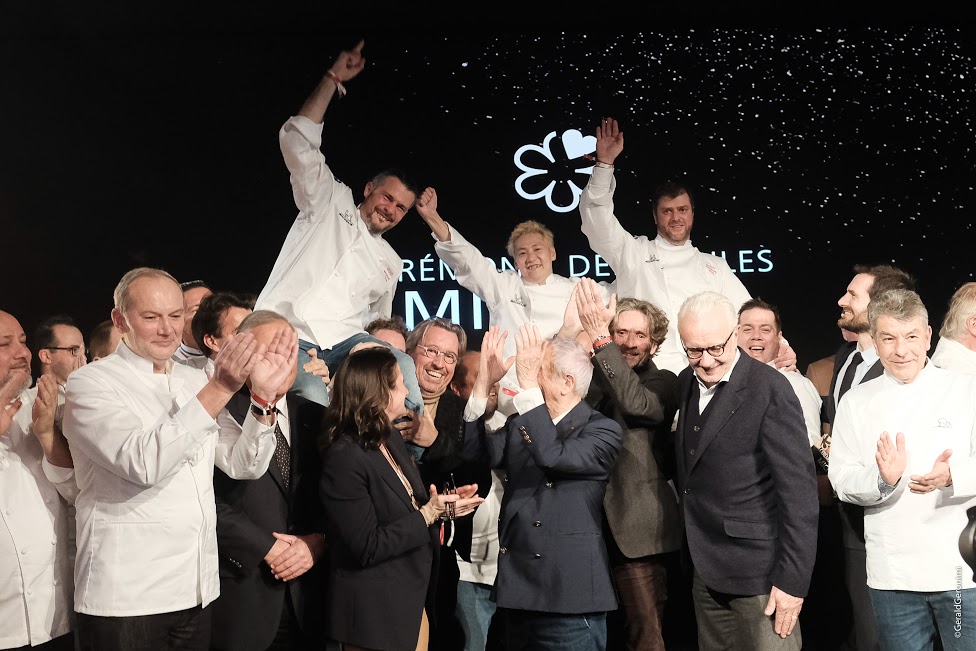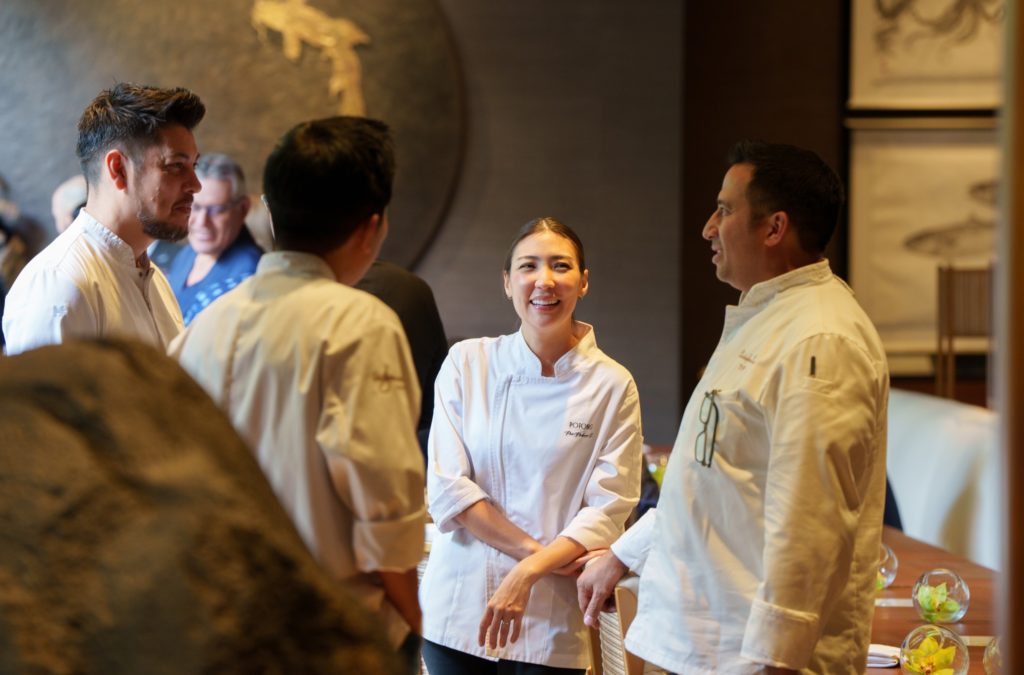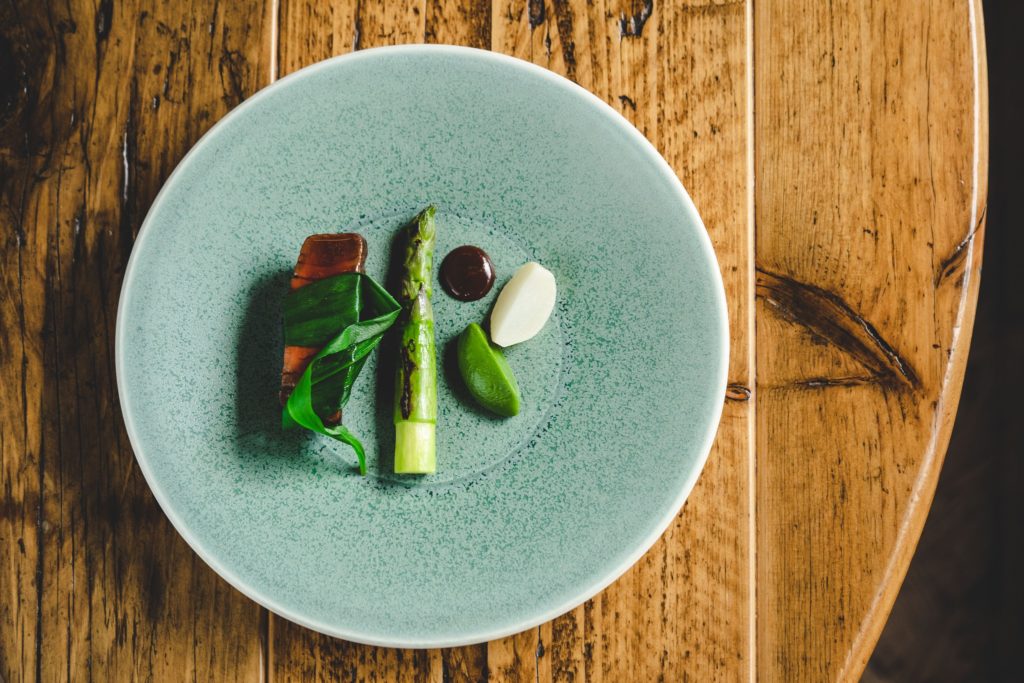Technical analysis of the differences between the Michelin Guide and the San Pellegrino ranking of The World’s 50 Best Restaurants.
A confrontation of gastronomic standards
The Michelin Guide and the San Pellegrino The World’s 50 Best Restaurants ranking share a common goal: to evaluate and rank the best restaurants in the world. However, their approaches, criteria, and influences are radically different. One is rooted in a tradition of rigorous anonymity, the other is based on an international vote by insiders. The result is not just a difference in methodology, but a fundamental divergence in how to view the world’s best chefs, high-end cuisine, and the legitimacy of what makes a great restaurant.
For over a century, the Michelin Guide has built a rating system based on a hierarchy of stars awarded according to standardized criteria applied worldwide. San Pellegrino, which appeared in the early 2000s, emphasizes emotion, creativity, and the unapologetic subjectivity of its voters. Where Michelin imposes a stable standard, San Pellegrino reflects a global and changing trend, fueled by social media, celebrity chefs, and stories about cuisines from around the world.
These differences have a direct impact on the visibility of establishments, their clientele, their prices, and how they are perceived by the industry and the general public. Understanding both systems is therefore essential to understanding the current drivers of international gastronomic recognition.


The Michelin Guide rating system
The Michelin Guide is based on a centralized, anonymous method using a set of stable criteria. Created in 1900 to help motorists, it has become, since the 1930s, the global benchmark for restaurant ratings. Today, it is published in more than 25 countries, with national editions (France, Japan, United States, etc.).
The Michelin inspectors are salaried employees who undergo several months of training and travel incognito to judge five main criteria: quality of the ingredients, mastery of cooking techniques and flavors, the personality of the chef in his kitchen, consistency over time, and value for money. These visits are repeated every year, allowing for long-term monitoring.
The stars are awarded according to a hierarchical system:
- 1 star indicates quality cuisine in its category;
- 2 stars designate a restaurant that is worth a detour;
- 3 stars qualify a restaurant that is worth a trip.
Obtaining three stars is rare: only 142 restaurants worldwide had three stars in 2024. In France, around 30 establishments hold this rating.
The Michelin system imposes constant rigor. A restaurant can lose its stars without public explanation. Chef Marc Veyrat, for example, left the system after losing a star, citing a lack of transparency.
Starred restaurants adjust their prices accordingly. A three-star tasting menu often exceeds $350 (approximately £300 / 400 €), with prices peaking at $600 (£520 / 650 €) at establishments such as Guy Savoy and Yannick Alléno.
Michelin maintains control over the entire process, making it a consistent tool but also one that is sometimes criticized for its opacity, its slowness to adapt to trends, and its conservatism towards emerging cuisines.
The San Pellegrino ranking and its voting model
The San Pellegrino The World’s 50 Best Restaurants ranking, launched in 2002 by the British magazine Restaurant Magazine, has established itself as a media and international alternative to the Michelin Guide. It is not a guide as such, but an annual list of winners, widely reported in the media and commented on in the restaurant world.
The ranking is based on the votes of 1,080 members of a global panel, the Academy of the 50 Best, divided into 27 regions. Each region has 40 voters: chefs, restaurateurs, food critics, and renowned foodies. Voting is personal, confidential, and based on their experiences over the past 18 months. Each voter must select 10 restaurants (at least 3 of which must be outside their region).
There are no anonymous visits, no fixed criteria, and no control over value for money. The ranking is based on emotion, memory, and reputation. It reflects trends, social phenomena, and stories surrounding the chefs. Innovative, deconstructed, and local cuisines earn a place without having to conform to the classic standards of haute cuisine.
As a result, establishments such as Central (Lima), Disfrutar (Barcelona) and Maido (Lima) have dominated recent rankings, often absent or less prominent in the Michelin Guide. The best restaurant in the world in 2023, Central, has never had three Michelin stars.
Chefs promoted by San Pellegrino often become international icons, highly visible on Instagram, Netflix, and at food festivals. This has a strong influence on culinary tourism. Restaurants in the Top 10 see their waiting lists explode, and their prices quickly align with those of Michelin 3-star restaurants: between $250 and $450 (€215 to €385 / £275 to £385) for a menu.
San Pellegrino therefore favors a freer, more emotional, but also more unstable approach. Some chefs appear for a few years and then disappear for no apparent reason. This lack of continuity has attracted criticism from the professional world.
Opposing approaches, different effects
The two systems do not have the same purpose. The Michelin Guide aims to provide a professional, consistent assessment that is independent of media hype. The San Pellegrino ranking, on the other hand, reflects cultural, social, and sometimes commercial dynamics. This is evident in the composition of the lists.
Michelin remains heavily focused on Europe and Japan, with less recognition for South American or African cuisines. Conversely, San Pellegrino gives visibility to emerging scenes: Pujol in Mexico City, Fyn in Cape Town and Atomix in New York find a place much more quickly than in traditional guides.
Economically speaking, Michelin has a strong influence on a restaurant’s sustainability. Gaining or losing stars has a direct impact on customer numbers, staff and commercial strategy. At San Pellegrino, the impact is more media-driven and short-lived, but sometimes stronger in terms of global communication.
The two systems are criticized in different ways. Michelin is often accused of elitism, slowness, and conservatism. San Pellegrino, on the other hand, is criticized for its lack of transparency, its Anglo-Saxon bias, and its tendency to favor “show-off” cuisine.
The best restaurants in the world, according to one ranking or another, are therefore not necessarily the same. An establishment such as Arpège (Paris) has had three stars for years, but rarely appears in San Pellegrino’s top 50. Conversely, Odette (Singapore), which is highly ranked in the latter, has no more than two Michelin stars.


A differentiated influence on global gastronomy
The Michelin Guide still shapes the structure of haute cuisine today by setting standards, training chefs, and guiding hotel schools. Its system also has an impact on the organization of work in kitchens, the economic models of restaurants, and the longevity of establishments.
The San Pellegrino ranking, on the other hand, plays more of a role in boosting reputation. It allows little-known cuisines to emerge quickly, young chefs to be spotted worldwide, and countries such as Peru, Thailand, and South Korea to position themselves as new gastronomic scenes without having to pass through European kitchens.
The two approaches coexist, often in conflict. Some chefs, such as René Redzepi (Noma), have chosen to withdraw from traditional rankings to focus on other forms of recognition. Others, such as Anne-Sophie Pic and Éric Frechon, continue to participate fully in the Michelin system.
It is therefore not a question of choosing between the two, but of understanding that the ranking of the best restaurants is no longer based on a single model. The coexistence of the two approaches reflects the current tensions between expertise, emotion, tradition, innovation, visibility, and credibility.
XperienceFrance is your travel specialist in France.